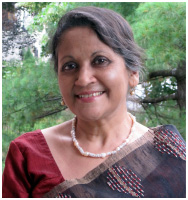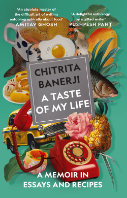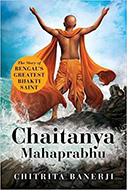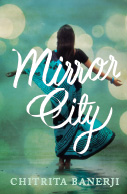Banana Blossom
Once, during a visit to Calcutta, I was invited to lunch by a woman whose reputation as a Bengali cook made me accept with delighted anticipation. The meal she served surpassed my expectations. What stood out above all the expensive fish and meat was her mochar ghanto, a fragrant dish consisting of banana blossom, or mocha, combined with tiny cubed potatoes, tinier coconut chips, chickpeas, and spices. It's a classic of Bengali cuisine which is known for its flavorful yet delicate use of spices and a wide range of ingredients.
My fellow guests avidly consumed every item on the table, but I noticed a teenage girl, who screwed up her face with acute dislike when she tasted the banana blossom. After lunch, the girl told me she'd never had it before and found the texture off-putting, though she didn't mind eating cucumbers, tomatoes, green peas, and cauliflowers. What she loved most, however, was going out with friends and ordering french fries at a fast food restaurant. Any budding notion I may have had about extolling the banana blossom to the younger generation instantly vanished.
Bananas have been around in India for eons, and both the blossom and the pith inside the trunk were long ago integrated into the cuisine. A sixteenth-century biography of the Bengali mystic Chaitanya lovingly describes a banana blossom dish prepared for him in the house of a disciple. The fruit is not only universal nourishment but a prime offering for the gods. In Bengal, the plant has a mystique enriched by folklore. As a child, I loved the story of the beautiful Behula who sailed downriver in a banana raft all the way to the underworld to rescue her husband from the deadly vengeance of Manasa, the snake goddess.
Growing up, cooking lessons did not interest me, but watching my mother painstakingly prepare mocha was a delight that never waned. She took the large cone-shaped object and removed the reddish-purple leafy bracts. Under each nestled a cluster of tiny bananas which she put aside. Once all the purple layers had been stripped away, a smooth ivory-colored center was revealed. Along with the pile of baby bananas, this was chopped into small pieces and briefly boiled with salt and tamarind to leach away any bitterness.
For her much-anticipated mochar ghanto, she then heated mustard oil, tossed in bay leaves, whole cumin seeds, and a few slit green chilies. As the fragrance of the spices filled the air, the banana blossom was added to the pot along with sautéed potatoes, coconut chips, and chickpeas, and seasoned with ground turmeric, ginger, cumin, coriander, chili powder and salt and sugar. A final emulsifying touch of ghee and garam masala was blended in just before the pot came off the fire. Bengali gastronomes consider this dish not only an eclectic pleasure but also a true test of a cook because of its mélange of textures — dense, chewy, soft and brittle — and the harmonious melding of spices. Every time I ate my mother's mochar ghanto, I agreed.
Sometimes, I saved a couple of the discarded purple bracts and pinned them together with toothpicks. Under my fingers they were amazingly seductive, soft as silk, smooth as velvet. The conical shape, slightly wider at one end, resembled a boat. In the evening, I'd go up to the roof, fill a large pail with water, place a small clay oil lamp left over from a Diwali festival on the purple leaf, and set it afloat. Usually, there was enough breeze to create little eddies on which the banana boat tossed around gently. I sat mesmerized, watching, wondering if it would capsize, but it never did, though the lamp went out after a while.
(A different version of this article was published in Departures, [Special issue, "India Now"], New York, October 2008.)




